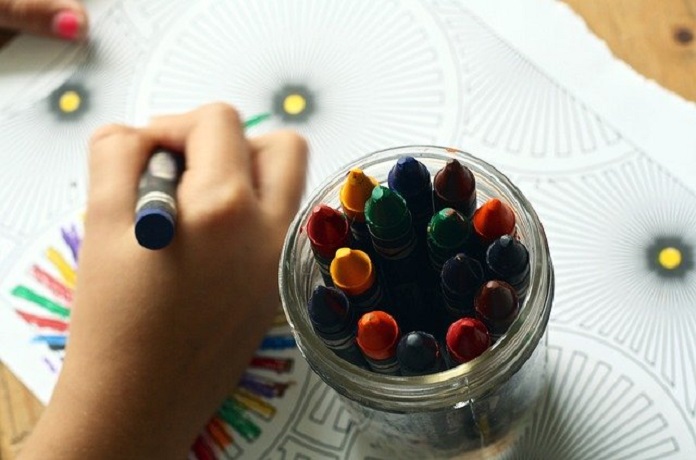Signs of anxiety in children need to be correctly identified to help with prompt diagnosis and intervention.
Many children experience feelings of sadness, hopelessness, and fear from time to time. However, persistent or intense forms of fear and worry could be due to anxiety. Anxiety is one of the most common mental health disorders in children and adults, affecting more than 20% of children and adolescents. Anxiety can have multiple causes, such as a family history of anxiety disorders, learned behaviours from family members, and stressful life events.
Diagnosing anxiety in young children can be difficult. Young children with anxiety are generally quiet and well-behaved, and so these traits may be often overlooked by their family members and teachers. Alternatively, they can be disruptive and troublesome, and so are labelled as a “bad” kid. In both situations, children with anxiety fail to receive support for their mental health.
Symptoms of anxiety in children
The body normally responds to danger by triggering the release of stress hormones. The stress (‘fight or flight’) response affects heart rate, breathing, muscles, nerves, and digestion. However, people with anxiety suffer from an overactive ‘fight or flight’ response, leading to the symptoms of anxiety.
Symptoms of anxiety in children can include extreme fear, irritability, anger, and changes in mood. Anxiety symptoms can also consist of trouble with sleeping through the night, fatigue, headaches, or stomach aches. Signs of anxiety in children are usually detected when the symptoms interfere with school, home, or social activities.
Sadly, untreated anxiety can result in depression, poor performance at school, difficulties in career progression, setbacks in relationships and social experiences, increased substance use, and a diminished quality of life.
Anxiety disorders
Children with anxiety will have different symptoms depending on their anxiety disorder.
- Generalized anxiety disorder causes children to worry and overthink on a daily basis, leading to poor focus and inattention at school. They may have poor attendance at school, since worry can cause them to feel anxious, sick, or tired. They may start avoiding everyday activities and suffer from a lot of negative thoughts about grades, family issues, and relationships with peers.
- Children with panic disorder experience sudden and repeated panic attacks. A panic attack is an unexpected rush of intense fear or discomfort, which can be accompanied by a racing heart, shaking, sweating, shortness of breath, nausea, fear of losing control, and fear of dying. Panic disorder is diagnosed if your child faces at least two panic attacks, followed by a month of concern about having another attack or “going crazy.”
- Separation anxiety disorder occurs when children do not outgrow the fear of being apart from parents or caregivers. This may mean that they cling to their parents and refuse to go to school, camp, or sleepovers, leading to a reduction in school attendance and performance, isolation from peers, and difficulties in maintaining friendships. Children with separation anxiety disorder frequently appear depressed, withdrawn, and uninterested. This disorder is most common in children between the ages of seven and nine.
- Social anxiety disorder is an excessive fear of social situations, such as school, parties, and athletic or recreational clubs. Children suffering with this anxiety disorder often feel self-conscious, distressed, and embarrassed. They usually make little eye contact or speak in an extremely soft voice in social situations. Being a shy or quiet child is very different to having social anxiety disorder.
- Selective mutism is a childhood anxiety disorder that is diagnosed when a child regularly does not speak in some social situations but is able to comfortably communicate in other settings. Selective mutism can significantly impair children’s lives and interrupt their participation in typical childhood activities. The average age of diagnosis of selective mutism is at five years old.
- Fears are common and anticipated in childhood; however, fears can develop into specific phobias that cause intense fear that is out of proportion to the situation. Phobias can include an extreme fear of animals, spiders, needles, blood, thunderstorms, or the dark. These irrational fears can manifest as crying, tantrums, clinginess, and avoidance of the situation that they fear.
Obsessive-compulsive disorder (OCD) and posttraumatic stress disorder (PTSD) are closely associated with anxiety disorders. Obsessive-compulsive disorder is characterised by intrusive thoughts and compulsion to repeatedly carry out routines to ease anxiety. Children with posttraumatic stress disorder may suffer from intense anxiety, irritability, and avoidance of people, places, or activities following a stressful or life-threatening event.
Treating anxiety in children
It is important to treat anxiety as a serious health problem. Parents should seek professional help if they notice any signs of anxiety in their children. There are practical strategies and tools available to help parents manage their child’s anxiety. Parents can teach their children to talk about their feelings, face their fears, and take risks in order to gain confidence and tackle their anxiety.
Anxiety disorders in children are most commonly treated with cognitive behavioural therapy (CBT). Cognitive behavioural therapy is a talk therapy that teaches children skills and techniques that can help them to reduce their anxiety. Anti-anxiety medications can also be used to ease anxious feelings, although it may take time to find the treatment that works best for your child and family lifestyle. Treatments for children can include strategies to help them feel less worried and have healthier habits, such as eating more nutritious food, increasing physical activity, getting sufficient sleep, and receiving social support.
Written by Albina Babu, MSc
References:
Anxiety in children. Anxiety Canada. Retrieved from: https://www.anxietycanada.com/learn-about-anxiety/anxiety-in-children/
Children’s mental health: anxiety and depression (2020). Centers for Disease Control and Prevention. Retrieved from: https://www.cdc.gov/childrensmentalhealth/depression.html
Anxiety disorders (2018). KidsHealth. Retrieved from: https://kidshealth.org/en/parents/anxiety-disorders.html
Childhood anxiety disorders (2015). Anxiety and Depression Association of America. Retrieved from: https://adaa.org/living-with-anxiety/children/childhood-anxiety-disorders
Image by Aline Ponce from Pixabay



